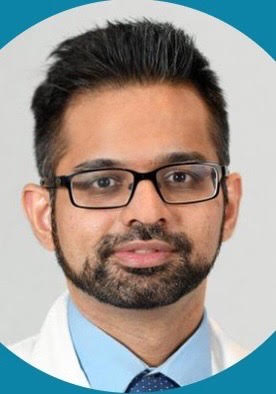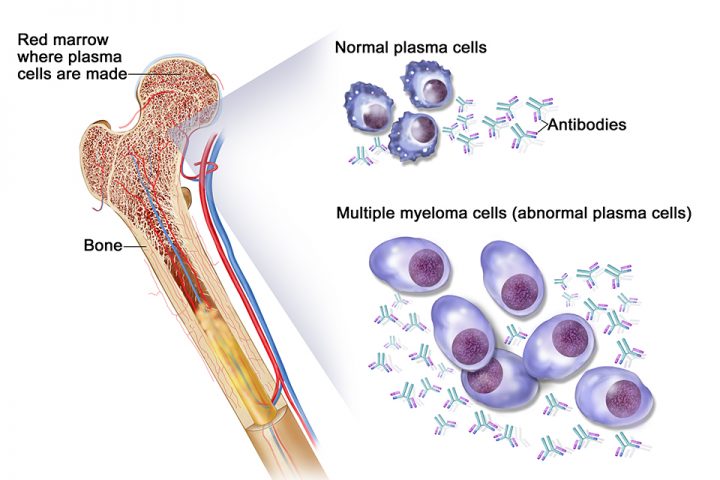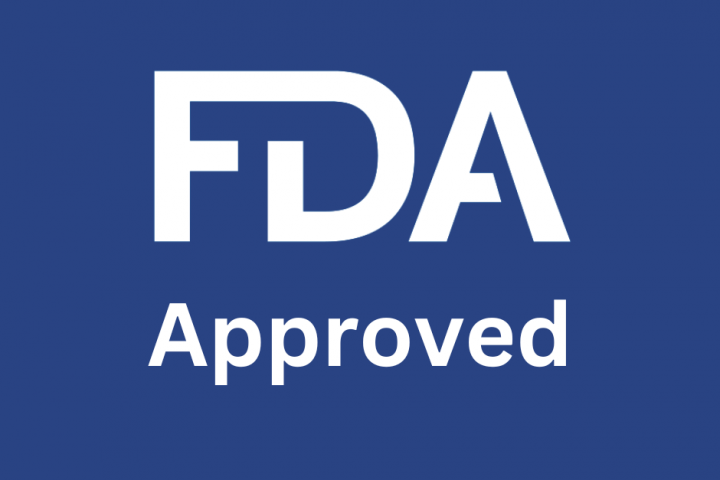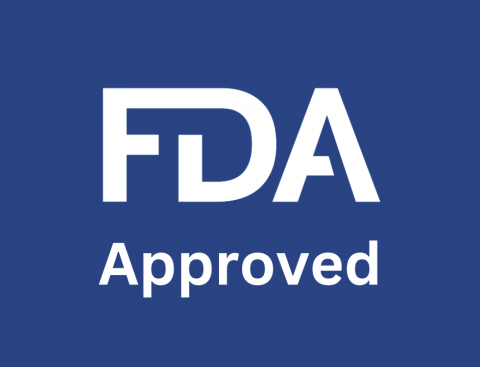By Dr. Harsh Parmar
In an unplanned interim analysis of an international phase-III trial (ATLAS) by Dytfeld et al., performed across 12 centers in Poland and the US, data for the efficacy of maintenance therapy with carfilzomib in combination with lenalidomide and dexamethasone (KRd) versus lenalidomide alone (R) post autologous stem cell transplant (ASCT), were published in Lancet Oncology. Several clinical trials have evaluated the role of single-agent therapy post autologous stem cell transplant (ASCT) in patients with newly diagnosed multiple myeloma. Data for single-agent lenalidomide is well established and considered to be a standard of care option globally[1][2]. Phase-III data for comparison against lenalidomide with an alternative maintenance therapy are limited. In one trial, the addition of ixazomib to lenalidomide and dexamethasone for two years did not improve progression-free survival (PFS)[3]. The CASSIOPEIA trial showed an improvement of PFS with maintenance daratumumab post-ASCT in the group of patients who did not receive daratumumab as a part of their induction therapy[4].
Patients who received any type of induction followed by a single ASCT were included in the study. The majority of patients received induction with bortezomib, thalidomide, and dexamethasone (69% in the KRD arm vs 61% in R alone arm). About 20% of patients had high-risk FISH (defined as having 13q(-), t(4;14), t(14;16), del(17)). Patients were randomized to receive maintenance with carfilzomib, lenalidomide, and dexamethasone or lenalidomide alone. Treatment with maintenance was initiated between days 80 and 130 following ASCT. After eight cycles, patients with standard risk disease by FISH were permitted to have de-escalation of therapy from KRD to R alone provided that they were negative for Minimal Residual Disease (MRD) following six cycles. 44% of patients achieved MRD negativity by cycle 6 and therefore were switched from KRd to R alone. Treatment was continued for a total of 36 cycles with KRd in the combination arm and subsequently de-escalated to R alone. Treatment with single-agent lenalidomide was continued until disease progression. At a median follow-up of 33.8 months (IQR 20.9-42.9), the median PFS was 59.1 months (95% CI, 54.8-NE) for the KRd arm versus 41.4 months (33.2-65.4) for the R alone arm, with a hazard ratio of 0.51(95% CI 0.31-0.86, p=0.012).
In a posthoc subgroup analysis, PFS in patients with standard-risk disease was longer with KRd compared with R alone, (median not reached [54.8-NE] vs 65.4 months [33.2-65.4] with a hazard ratio of 0.37 [0.20-0.70]. Overall survival was not significantly different between the two groups (HR=0.83 [95% CI 0.35-2.00]; p=0.86; median OS was not reached [NE-NE]. Nine patients (10%) died in the KRD arm and 11 (13%) died in the R arm. The complete response (CR) rate was higher in the combination arm. Although grade 3-4 adverse events were similar between both arms, lower respiratory tract infections (12% vs 3%) were reported more frequently with KRd compared with R alone. One patient died due to pneumonia in the KRd arm.
The study provides data about a possible alternative maintenance strategy with KRd for 8-36 cycles, in patients with multiple myeloma in the post-ASCT setting. These findings are consistent with those found in the FORTE trial where the addition of carfilzomib to lenalidomide showed an improvement of PFS compared with lenalidomide alone, with or without ASCT[5]. Given the lack of OS benefit as well as PFS benefit for patients with high-risk cytogenetics or ISS stage-III, it is still unclear if this represents a practice-changing update. Having said that, the trial does show that an MRD-directed risk-adapted strategy in the maintenance setting for patients with standard-risk disease offers a benefit with regards to PFS with a relatively favorable tolerability profile.
[1] J. R. Jones et al., “Title – Myeloma XI Trial for Newly Diagnosed Multiple Myeloma (NDMM); Long Term Second Primary Malignancy (SPM) Incidence in the Context of Lenalidomide Maintenance,” Blood, vol. 134, no. Supplement_1, 2019, doi: 10.1182/blood-2019-127469.
[2] P. L. McCarthy et al., “Lenalidomide maintenance after autologous stem-cell transplantation in newly diagnosed multiple myeloma: A meta-analysis,” Journal of Clinical Oncology, vol. 35, no. 29, 2017, doi: 10.1200/JCO.2017.72.6679.
[3] L. Rosinol et al., “Ixazomib Plus Lenalidomide/Dexamethasone (IRd) Versus Lenalidomide /Dexamethasone (Rd) Maintenance after Autologous Stem Cell Transplant in Patients with Newly Diagnosed Multiple Myeloma: Results of the Spanish GEM2014MAIN Trial,” Blood, vol. 138, no. Supplement 1, 2021, doi: 10.1182/blood-2021-146798.
[4] P. Moreau et al., “Maintenance with daratumumab or observation following treatment with bortezomib, thalidomide, and dexamethasone with or without daratumumab and autologous stem-cell transplant in patients with newly diagnosed multiple myeloma (CASSIOPEIA): an open-label, randomised, phase 3 trial,” Lancet Oncol, vol. 22, no. 10, 2021, doi: 10.1016/S1470-2045(21)00428-9.
[5] F. Gay et al., “Carfilzomib with cyclophosphamide and dexamethasone or lenalidomide and dexamethasone plus autologous transplantation or carfilzomib plus lenalidomide and dexamethasone, followed by maintenance with carfilzomib plus lenalidomide or lenalidomide alone for patients with newly diagnosed multiple myeloma (FORTE): a randomised, open-label, phase 2 trial,” Lancet Oncol, vol. 22, no. 12, 2021, doi: 10.1016/S1470-2045(21)00535-0.







